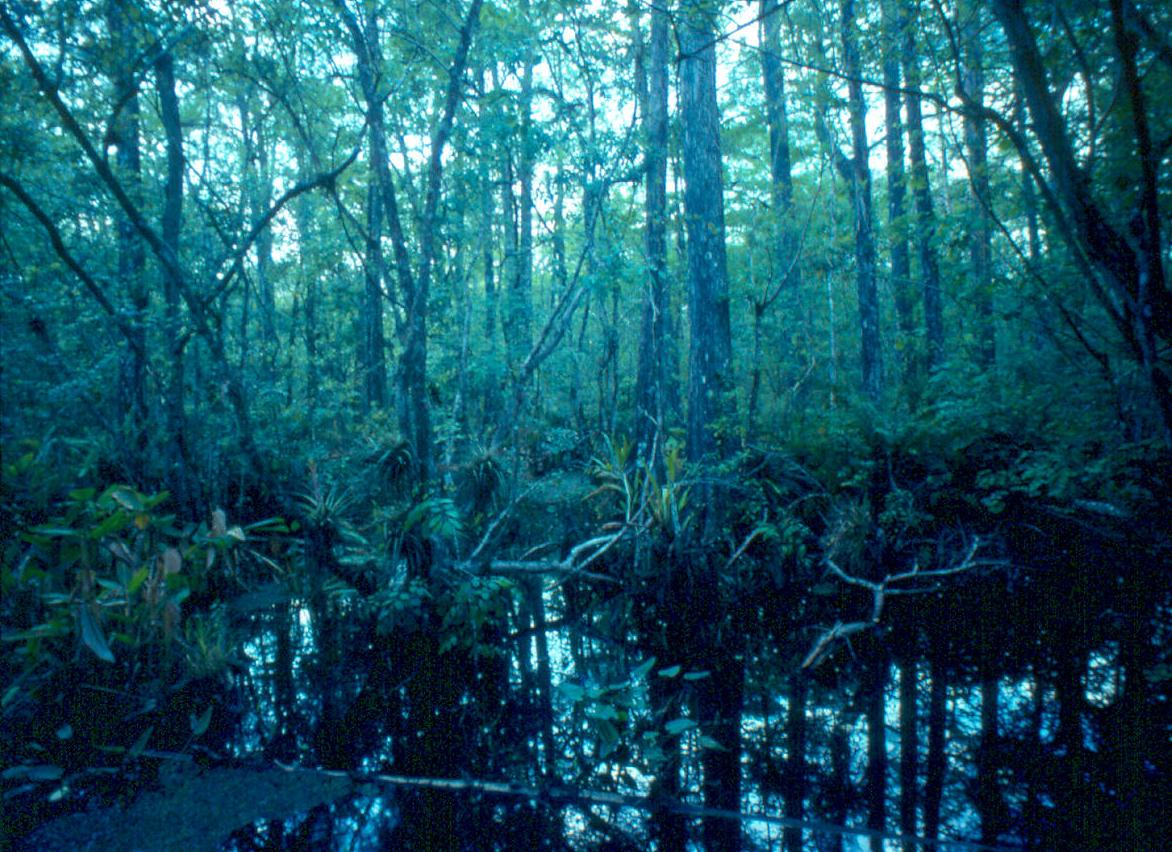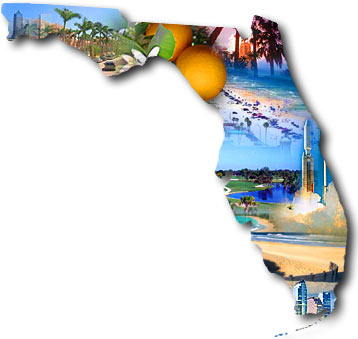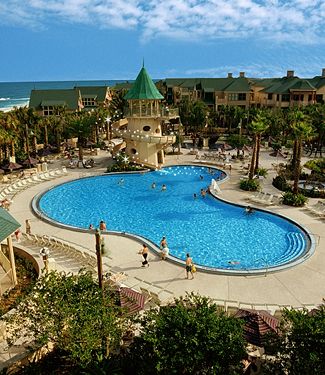Florida is one of the most popular tourist destinations in the world, with visitors heading to ‘The Sunshine State’ in search of fun, sun and thrills. Walt Disney World, Magic Kingdom Park and Busch Gardens are just a few of the man-made attractions for which the State is famed. Orlando is the face of Florida that most people recognize, with its enormous number of theme parks, movie studios, water parks and entertainment facilities.
But there is more to Florida than Mickey Mouse and white-knuckle rides. Winding waterways, freshwater lakes, hills, forests, exciting cities, 13,560km (8426 miles) of coast, countless bays, inlets and islands, and a legendary climate make this one of the most popular States in the USA.
Florida is divided into eight geographical regions: Northwest; North Central; Northeast; Central West; Central; Central East; Southwest; and Southeast Florida & the Keys. Situated on the southeastern tip, Miami and Miami Beach have long been a haunt of the rich and famous, and star-spotting is a popular pastime here. Palm Beach scores equally highly in the glamour stakes. Fort Lauderdale is a popular spot for families, offering a wide assortment of sports and recreational activities. To the south, the Florida Keys offers a tropical climate, beautiful beaches and clear blue waters.
The capital of Florida, Tallahassee, is geographically closer to Atlanta than Miami and is strictly Southern in tone. It was chosen as the State capital in 1823, as a compromise between Pensacola and St Augustine, which had both been vying for the honor. Today, it is often described as ‘The Other Florida’ with its rolling hills, oak forests, cool climate and distinctly Southern feel.
Tampa and St Petersburg are the main cities in the Central West region. Sarasota is the cultural capital of the region, thanks to John Ringling and his wife who amassed an impressive art collection, which is today displayed in their restored mansion. The southwestern region is home to Naples, a popular seaside retreat. Just off the mainland, Marco Island stands as a model of ecological preservation.
In the northeastern corner of Florida stands Jacksonville, named after General Andrew Jackson. Nearby St Augustine is known as ‘America’s Oldest City’ and is home to more than 60 historic sites. Amelia Island, often called the ‘Isle of Eight Flags’, is the only site in the country to have been governed by eight different countries during its history. At its heart lies Fernandina Beach, the nation’s second-oldest city. Daytona is located in the slender Central East region. The beach is the city’s main attraction, with a 510m (1700ft) boardwalk brimming with amusements, rides and snack bars.

S Florida, USA; swampy, subtropical region, length c.160 km/100 mi, width 80–120 km/50–75 mi, area c.12 950 km²/5000 sq mi; covers most of the Florida peninsula S of L Okeechobee; consists of saw grass savannahs and water dotted by clumps of reeds; in an area of heavy rainfall only a few metres above sea-level; drainage and reclamation schemes have made a large amount of land productive, mostly in citrus fruits and sugar; Seminole Indians fled to the area in 1842, during the Seminole War; Everglades National Park (area 5668 km²/2188 sq mi) in the S includes much of Florida Bay, with its many keys; a world heritage site.
The Florida Everglades are subtropical marshlands located in the southern portion of the U.S. state of Florida, specifically in parts of Monroe, Collier, Palm Beach, Miami-Dade, and Broward counties. Although much modified by agricultural development in central and southern Florida, the Everglades is the southern half of a large watershed arising in the vicinity of Orlando known as the Kissimmee River system. Water leaving Lake Okeechobee in the wet season forms the Everglades, a shallow, slow-moving flood at one time 40 miles wide and over 100 miles long moving southward across a nearly flat, limestone shelf to Florida Bay at the southern end of the state.
The Everglades extends from Lake Okeechobee on the north to Florida Bay on the south and was once bordered by Big Cypress Swamp on the west and the Atlantic Coastal Ridge on the east.
Some 50 percent of the original Everglades has been lost to agriculture. Water from the Everglades is still used as a water supply for major cities in the area, such as Miami. The Everglades is crossed from west to east by a toll road called "Alligator Alley", now part of Interstate 75.
There are several small outlets, such as the Miami River and the New River on the east and the Shark River on the southwest.
Everglades National Park preserves the southern portion of the Everglades (all south of Tamiami Trail), but represents only 27.3% of the original area. There have been recent expansions to the park's tourist facilities to bring in more money to Florida's economy such as a massive extension to the visiting center, many outposts along the bridges that span the Everglades that teach people about the many birds and other wildlife native to the Everglades and also a small petting zoo.
The Everglades also face an ongoing threat from the melaleuca tree (Melaleuca quinquenervia). Sprinkled from airplanes using salt and pepper shakers, the tiny seeds of the thirsty tree were intended to suck up the water and make the "land" of the Everglades suitable for development.
Brazilian Pepper (Florida Holly) has also wreaked havoc on the Everglades, exhibiting a tendency to spread rapidly and crowd out native species. The Brazilian Pepper problem is not exclusive to the Everglades;
Native to southern Asia, the Burmese python, Python molurus bivittatus is a relatively new invasive species in the Everlgades. The Everglades habitat is perfect for bivittatus, and this species is said to be reproducing rapidly.







But there is more to Florida than Mickey Mouse and white-knuckle rides. Winding waterways, freshwater lakes, hills, forests, exciting cities, 13,560km (8426 miles) of coast, countless bays, inlets and islands, and a legendary climate make this one of the most popular States in the USA.
Florida is divided into eight geographical regions: Northwest; North Central; Northeast; Central West; Central; Central East; Southwest; and Southeast Florida & the Keys. Situated on the southeastern tip, Miami and Miami Beach have long been a haunt of the rich and famous, and star-spotting is a popular pastime here. Palm Beach scores equally highly in the glamour stakes. Fort Lauderdale is a popular spot for families, offering a wide assortment of sports and recreational activities. To the south, the Florida Keys offers a tropical climate, beautiful beaches and clear blue waters.
The capital of Florida, Tallahassee, is geographically closer to Atlanta than Miami and is strictly Southern in tone. It was chosen as the State capital in 1823, as a compromise between Pensacola and St Augustine, which had both been vying for the honor. Today, it is often described as ‘The Other Florida’ with its rolling hills, oak forests, cool climate and distinctly Southern feel.
Tampa and St Petersburg are the main cities in the Central West region. Sarasota is the cultural capital of the region, thanks to John Ringling and his wife who amassed an impressive art collection, which is today displayed in their restored mansion. The southwestern region is home to Naples, a popular seaside retreat. Just off the mainland, Marco Island stands as a model of ecological preservation.
In the northeastern corner of Florida stands Jacksonville, named after General Andrew Jackson. Nearby St Augustine is known as ‘America’s Oldest City’ and is home to more than 60 historic sites. Amelia Island, often called the ‘Isle of Eight Flags’, is the only site in the country to have been governed by eight different countries during its history. At its heart lies Fernandina Beach, the nation’s second-oldest city. Daytona is located in the slender Central East region. The beach is the city’s main attraction, with a 510m (1700ft) boardwalk brimming with amusements, rides and snack bars.

Everglades
S Florida, USA; swampy, subtropical region, length c.160 km/100 mi, width 80–120 km/50–75 mi, area c.12 950 km²/5000 sq mi; covers most of the Florida peninsula S of L Okeechobee; consists of saw grass savannahs and water dotted by clumps of reeds; in an area of heavy rainfall only a few metres above sea-level; drainage and reclamation schemes have made a large amount of land productive, mostly in citrus fruits and sugar; Seminole Indians fled to the area in 1842, during the Seminole War; Everglades National Park (area 5668 km²/2188 sq mi) in the S includes much of Florida Bay, with its many keys; a world heritage site.
The Florida Everglades are subtropical marshlands located in the southern portion of the U.S. state of Florida, specifically in parts of Monroe, Collier, Palm Beach, Miami-Dade, and Broward counties. Although much modified by agricultural development in central and southern Florida, the Everglades is the southern half of a large watershed arising in the vicinity of Orlando known as the Kissimmee River system. Water leaving Lake Okeechobee in the wet season forms the Everglades, a shallow, slow-moving flood at one time 40 miles wide and over 100 miles long moving southward across a nearly flat, limestone shelf to Florida Bay at the southern end of the state.
The Everglades extends from Lake Okeechobee on the north to Florida Bay on the south and was once bordered by Big Cypress Swamp on the west and the Atlantic Coastal Ridge on the east.
Some 50 percent of the original Everglades has been lost to agriculture. Water from the Everglades is still used as a water supply for major cities in the area, such as Miami. The Everglades is crossed from west to east by a toll road called "Alligator Alley", now part of Interstate 75.
There are several small outlets, such as the Miami River and the New River on the east and the Shark River on the southwest.
Everglades National Park preserves the southern portion of the Everglades (all south of Tamiami Trail), but represents only 27.3% of the original area. There have been recent expansions to the park's tourist facilities to bring in more money to Florida's economy such as a massive extension to the visiting center, many outposts along the bridges that span the Everglades that teach people about the many birds and other wildlife native to the Everglades and also a small petting zoo.
The Everglades also face an ongoing threat from the melaleuca tree (Melaleuca quinquenervia). Sprinkled from airplanes using salt and pepper shakers, the tiny seeds of the thirsty tree were intended to suck up the water and make the "land" of the Everglades suitable for development.
Brazilian Pepper (Florida Holly) has also wreaked havoc on the Everglades, exhibiting a tendency to spread rapidly and crowd out native species. The Brazilian Pepper problem is not exclusive to the Everglades;
Native to southern Asia, the Burmese python, Python molurus bivittatus is a relatively new invasive species in the Everlgades. The Everglades habitat is perfect for bivittatus, and this species is said to be reproducing rapidly.









 11:47 AM
11:47 AM
 crkota
crkota












 Posted in:
Posted in: 

0 comments:
Post a Comment